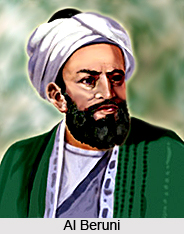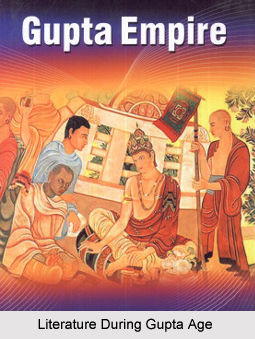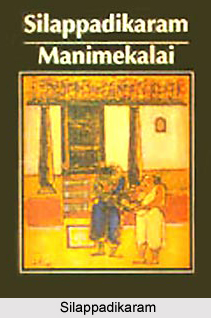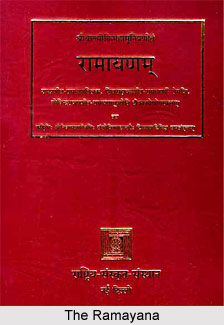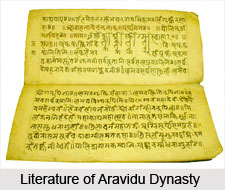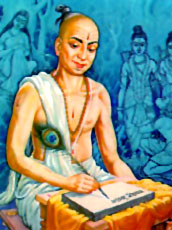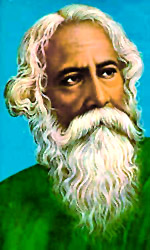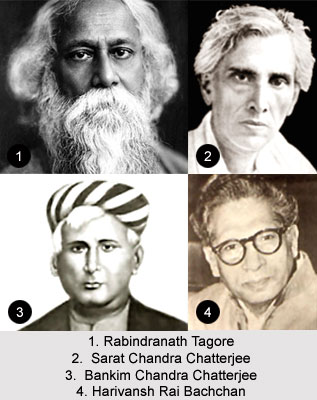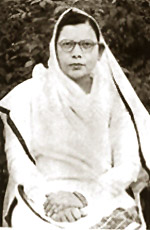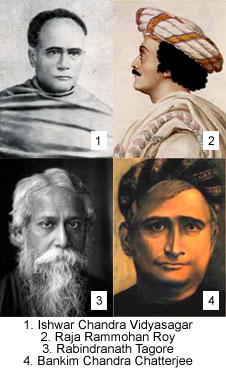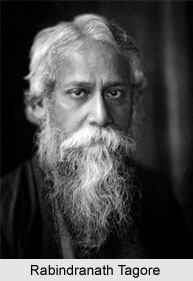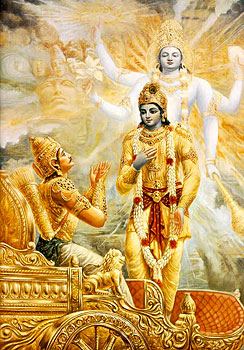 Jambhoji a Panwar Rajput, born at Pipasar had founded the Vishnoi tradition in the year 1485. He was a great synthetist and saviour of religious traditions and culture. Sikandar Lodi, a ruler of the Lodi dynasty in Agra had been enlightened by his preaching. He admitted both Hindus and Muslims to his fold. He revived the old yagya tradition. Some of the tenets of Visnoi tradition include performing hawan by pouring ghee into the fire, reciting his sabad vani, daily in the morning, Visnu-Smaran, compassion for all living beings, to keep fast on Amavasya, to control the passions, like kam, krodh, to speak after considering all aspects, to give up theft, ill speaking, lie and argumentation, never to fell green trees. He believes in the Incarnations of God but deprecates idolatory. He is more inclined towards Bhagavad Gita among all the sacred texts. The note of monism is conspicuous in his Vani. According to him, one should be industrious and work hard with honesty and sincerity without desiring the fruit of it, in whatever position one may be. One should continue with righteous deeds in spite of impediments and should have no repentance or regret about them.
Jambhoji a Panwar Rajput, born at Pipasar had founded the Vishnoi tradition in the year 1485. He was a great synthetist and saviour of religious traditions and culture. Sikandar Lodi, a ruler of the Lodi dynasty in Agra had been enlightened by his preaching. He admitted both Hindus and Muslims to his fold. He revived the old yagya tradition. Some of the tenets of Visnoi tradition include performing hawan by pouring ghee into the fire, reciting his sabad vani, daily in the morning, Visnu-Smaran, compassion for all living beings, to keep fast on Amavasya, to control the passions, like kam, krodh, to speak after considering all aspects, to give up theft, ill speaking, lie and argumentation, never to fell green trees. He believes in the Incarnations of God but deprecates idolatory. He is more inclined towards Bhagavad Gita among all the sacred texts. The note of monism is conspicuous in his Vani. According to him, one should be industrious and work hard with honesty and sincerity without desiring the fruit of it, in whatever position one may be. One should continue with righteous deeds in spite of impediments and should have no repentance or regret about them.
The object of the human life is to realize the self and to attain Jiwan-Mukti. He believes in rebirth and Karma. He warns against ostentation and hypocrisy. His Vani, known as Sabad Vani consists of 123 sabads. The language of the Vani is unsophisticated Rajasthani, popular among the village folk. He was the propagator of Sagunonmukh-Nirgun Bhakti.
There have been many great poets in Visnoi tradition. Some of the notable poets of this tradition were Tejoji Caran, Samas Din, Sivdas, Amiya Din, Kanhoji Barhat.
Odoji Nain expresses lucidly his spiritual experiences. His Sakhis, Harjas, Kavitts and Grabh-Citwani are extant. Vilhoji provided a firm footing to the Sampraday by his deeds and writings. His seven Kathas are narrating episodes in the life of Jambhoji. The poems are full of emotion and express his deep devotion. Sac-Akhari Vigatawali is a unique work inasmuch as it provides a list of many words and phrases which are commonly used in a `wrong` sense but to which the author has given their appropriate meaning and right usage. His object was to make people veridical in speech and use right diction, as truth leads to Moksha.
Surjandasji Puniya of the village Bhiyansar (Phalaudl) was a poet of deep learning and saintliness. His Ram Rasau, Gajmokh and Usa Puran have already been discussed. His Katha Cetan, Citawani and Dharmcari are didactic poems recommending good` deeds to get rid of the cycle of rebirth. Katha Harigun is like Hari Ras of Barhat Isardas and describes with devotion the attributes, of Hari. Katha Autar ki und Katha Prasiddha narrate in brief the story of Jambhoji. Gyan Mahatam and Gyan Tilak are allegories (Rupak Kavya) like Tribhuwan Dipak Prabandh of Raj Sekhar. The body has been likened to a fort and different instincts have been presented as human characters. Ultimately the good ones gain victory over the evil ones. In Bhogal Puran, a brief account of the Bhugol or the universe, its creation, destruction and the ten Incarnations, has been given. His language is easy and literary Rajasthani. His poetry is an effort towards the elevation of humanity to higher planes of consciousness. It is also important from the point of view of culture, ideology, sadhana and language. He has contributed to all the major trends of Rajasthani poetry except the erotic. He has used all the popular metres and forms. He is the representative poet of the 17th century.
Parmanandji was one of the great saint poets of the 18th century. His prasangas depict in easy Rajasthani his experience and philosophy of sympathy and magnanimity. His similes are very effective.
Harcandji Dhukiya and Udoji Ading followed the tradition of writing narrative poems on mythological themes such as Prahlad. His verses show deep devotion, intensity of feelings and spiritual contemplation. These poems are important in their respective traditions.
Din Sudardi, Rahmatji, Durgdas, Ramu Khod, Gokalji and Govhid Ramji are some other important poets in this tradition.

